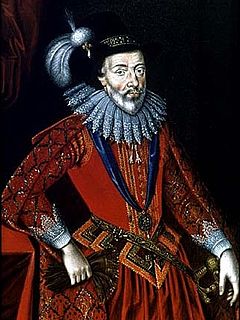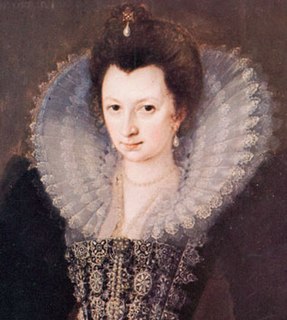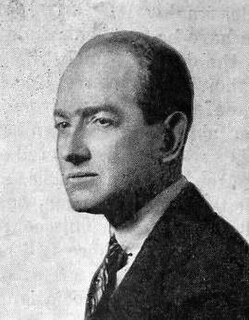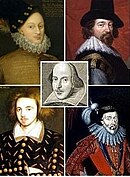
The Oxfordian theory of Shakespeare authorship contends that Edward de Vere, 17th Earl of Oxford, wrote the plays and poems traditionally attributed to William Shakespeare. Though literary scholars reject all alternative authorship candidates, including Oxford, interest in the Oxfordian theory continues. Since the 1920s, the Oxfordian theory has been the most popular alternative Shakespeare authorship theory.

Henry Wriothesley, 3rd Earl of Southampton, , was the only son of Henry Wriothesley, 2nd Earl of Southampton, and Mary Browne, daughter of Anthony Browne, 1st Viscount Montagu. Shakespeare's two narrative poems, Venus and Adonis and The Rape of Lucrece, were dedicated to Southampton, who is frequently identified as the Fair Youth of Shakespeare's Sonnets.

John Thomas Looney (luni) was an English school teacher who is notable for having originated the Oxfordian theory, which claims that Edward de Vere, 17th Earl of Oxford (1550–1604) was the true author of Shakespeare's plays.

William Stanley, 6th Earl of Derby, KG was an English nobleman and politician. Stanley inherited a prominent social position that was both dangerous and unstable, as his mother was heir to Queen Elizabeth I under the Third Succession Act, a position inherited in 1596 by his deceased brother's oldest daughter, Anne, two years after William had inherited the Earldom from his brother. After a period of European travel in his youth, a long legal battle eventually consolidated his social position. Nevertheless, he was careful to remain circumspect in national politics, devoting himself to administration and cultural projects, including playwriting.
Charles Francis Topham de Vere Beauclerk, also styled Earl of Burford by courtesy, is a British aristocrat and heir to the peerage title of Duke of St Albans.

William Hughes is one potential candidate for the person on whom the "Fair Youth" of Shakespeare's Sonnets is based. The "Fair Youth" is a handsome, effeminate young man to whom the poet addresses many passionate sonnets. Some sonnets can be interpreted as puns on the name "William Hughes". However, no real life person of that name can easily be identified with the character.

Elizabeth Wriothesley, Countess of Southampton was one of the chief ladies-in-waiting to Elizabeth I of England in the later years of her reign.
Charles Wisner Barrell was an American writer. He first became significant as an art critic, promoting realism. He later built a career as an early exponent of public relations and as a documentary film maker.

Elizabeth Stanley, Countess of Derby, Lord of Mann, was an English noblewoman and the eldest daughter of the Elizabethan courtier and poet Edward de Vere, 17th Earl of Oxford.

The Ashbourne portrait is one of the numberless portraits that have been falsely identified as portrayals of William Shakespeare. At least 60 such works had been offered for sale to the National Portrait Gallery in the 19th century within the first forty years of its existence; the Ashbourne portrait was one of these. The portrait is now a part of the collection of the Folger Shakespeare Library in Washington, DC.

Note: In compliance with the accepted terminology used within the Shakespeare authorship question, this article uses the term "Stratfordian" to refer to the position that William Shakespeare of Stratford-upon-Avon was the primary author of the plays and poems traditionally attributed to him. The term "anti-Stratfordian" is used to refer to the theory that some other author, or authors, wrote the works.

Charlton Greenwood Ogburn was a lawyer who served as a public official in various capacities from 1917 through to the 1930s. He was employed as legal counsel both for government corporations and labor organizations. His most widely recognized work was undertaken as counsel for the American Federation of Labor in the 1930s.

Anonymous is a 2011 period drama film directed by Roland Emmerich and written by John Orloff. The film is a fictionalized version of the life of Edward de Vere, 17th Earl of Oxford, an Elizabethan courtier, playwright, poet and patron of the arts, and suggests he was the actual author of William Shakespeare's plays. It stars Rhys Ifans as de Vere and Vanessa Redgrave as Queen Elizabeth I of England.

Hester Dowden (1868–1949), also known as Hester Travers Smith, was an Irish spiritualist medium who is most notable for having claimed to contact the spirits of Oscar Wilde, William Shakespeare and other writers. Dowden's writings were published by various authors. She wrote Voices from the Void (1919), an account of her life as a medium, and Psychic Messages from Oscar Wilde (1923).
Louis Paul Bénézet (1878–1961) was an American educator and writer who pioneered the reform of school education in the early twentieth century.

The Shakespeare authorship question is the argument that someone other than William Shakespeare of Stratford-upon-Avon wrote the works attributed to him. Anti-Stratfordians—a collective term for adherents of the various alternative-authorship theories—believe that Shakespeare of Stratford was a front to shield the identity of the real author or authors, who for some reason—usually social rank, state security, or gender—did not want or could not accept public credit. Although the idea has attracted much public interest, all but a few Shakespeare scholars and literary historians consider it a fringe theory, and for the most part acknowledge it only to rebut or disparage the claims.
Percy Allen (1875–1959) was an English journalist, writer and lecturer most notable for his advocacy of the Oxfordian theory of Shakespeare authorship, and particularly for his creation of Prince Tudor theory, which claimed that the Earl of Oxford fathered a child with Queen Elizabeth I.
Bernard Mordaunt Ward was a British author and third-generation soldier most noted for his support of the Oxfordian theory of Shakespeare authorship and writing the first documentary biography of Edward de Vere, 17th Earl of Oxford.















